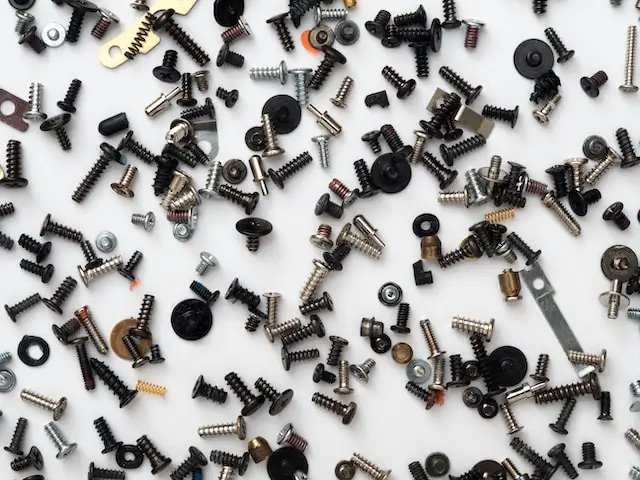Self-tapping screws are widely used for fastening applications due to their convenience and effectiveness. However, successful installation requires proper techniques and troubleshooting skills. In this article, we will explore the importance of troubleshooting and addressing common issues related to self-tapping screws. By understanding these challenges and implementing effective solutions, we can ensure secure and efficient fastening.
Importance of Proper Installation
Proper installation techniques are crucial for the successful use of self-tapping screws. When installed incorrectly, screws may fail to provide the desired holding power or may damage the materials being fastened. Troubleshooting plays a vital role in identifying and rectifying potential problems during the installation process, ensuring reliable and secure connections.
Common Issues with Self-Tapping Screws
Stripping of Screw Threads
Stripping occurs when excessive torque or an incorrect screwdriver/bit size is used. To prevent stripping, it is essential to use the right tools and apply the appropriate pressure. Choosing the correct screwdriver/bit size and ensuring a proper fit can help maintain the integrity of the screw threads.
Thread Damage
Thread damage can result from overtightening, improper alignment, or debris in the threads. It is important to exercise caution and avoid applying excessive force during installation. Regularly cleaning the threads and using thread repair tools can help address and prevent thread damage.
Insufficient Grip or Holding Power
Insufficient grip or holding power can be caused by factors such as incorrect screw length, improper material selection, or inadequate pre-drilling. To address this issue, it is crucial to select the appropriate screw size for the application, use pilot holes when necessary, and consider using anchors in weaker materials.
Breaking or Snapping of Screws
Breaking or snapping of screws can occur due to using low-quality or incorrect screws, overtightening, or applying excessive force. To avoid this issue, it is important to use high-quality screws suitable for the intended application. Applying gradual pressure during installation and using the correct torque settings can also help prevent breakage.
Struggling to Start the Screw
Struggling to start the screw can result from using dull or damaged drill bits, incorrect positioning, or tough material surfaces. Using sharp drill bits, marking the starting point, and using a center punch for harder materials can make it easier to start the screw and ensure accurate placement.
Troubleshooting Techniques and Best Practices
To effectively troubleshoot common issues with self-tapping screws, a systematic approach is essential. Start by assessing the problem and identifying the root cause. Once the issue is identified, implement appropriate solutions, such as adjusting torque settings, selecting different screws, using thread repair tools, or seeking professional advice when needed. Following manufacturer guidelines and best practices, such as using the correct tools and following recommended installation procedures, can also help avoid common issues.
Preventive Measures
Preventive measures are key to minimizing common issues during self-tapping screw installation. Selecting the appropriate screw size, considering the material properties, and using pilot holes when necessary can help ensure a secure and long-lasting connection. Additionally, using high-quality screws from reputable manufacturers and following recommended guidelines for torque and installation can significantly reduce the likelihood of encountering problems.
Seeking Professional Help
While troubleshooting can resolve many common issues, some situations may require professional assistance. Complex problems or those related to structural integrity may necessitate consultation with structural engineers or experienced contractors. Recognizing when professional help is needed is essential to ensure safety and the long-term reliability of the fastening solution.
Conclusion
Troubleshooting and addressing common issues related to self-tapping screws are vital for successful installation. By understanding the challenges associated with these screws and implementing effective solutions, we can achieve secure and efficient fastening. Through practical troubleshooting techniques, preventive measures, and seeking professional help when necessary, individuals and professionals can overcome common issues and ensure the reliable performance of self-tapping screws.
In conclusion, proper installation of self-tapping screws is essential for successful fastening applications. Troubleshooting common issues ensures that the screws perform as intended, providing reliable holding power and preventing damage to the materials being fastened. By understanding the causes of common problems such as stripped threads, thread damage, insufficient grip, breaking or snapping of screws, and difficulty starting the screw, individuals can take proactive steps to prevent and address these issues.
Following troubleshooting techniques, such as using the correct tools, adjusting torque settings, and implementing appropriate solutions, helps overcome challenges and ensures secure fastening connections. Additionally, implementing preventive measures such as selecting the right screw size, considering material properties, and using pilot holes when necessary contributes to the long-term success of self-tapping screw installations.
However, it is important to recognize that in some instances, professional help may be required, particularly for complex issues or situations involving structural integrity. Consulting with experienced contractors or structural engineers can provide the expertise needed to address intricate problems and ensure the safety and reliability of the fastening solution.
By understanding the common issues associated with self-tapping screws, implementing troubleshooting techniques, and adopting preventive measures, individuals and professionals can overcome challenges and achieve successful installations. Taking the time to troubleshoot and address common issues not only ensures the integrity of fastening applications but also enhances efficiency, safety, and the overall quality of projects.
In the end, a proactive approach to troubleshooting and addressing common issues with self-tapping screws is key to achieving successful installations and maintaining reliable fastening connections. By employing proper techniques, following best practices, and seeking professional assistance when needed, individuals can maximize the benefits of self-tapping screws and achieve secure, efficient, and long-lasting fastening solutions.





